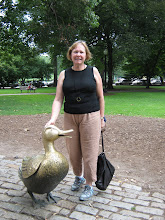Celebrated annually on 21st August, this day recognises the important role goats have played in human history as one of the first domesticated animals, providing food, clothing, and fertiliser. Goats were tamed by humans and were being herded 9,000 years ago. Goat's pupils are rectangular which gives them vision for 320 to 340 degrees compared to humans who have only 160 to 210 degrees.
Goats make great companions. They can do many things like giving us milk, meat, and even wool. There are various breeds of goats, each with their own characteristics. Some goats are very small, such as pygmy goats, whereas others are large and powerful, such as Boer goats. Goats are incredibly versatile animals with a wide range of shapes, sizes, breeds, and colours.
The largest goats are the Markhor who are native to Central Asia, the Himalayas, and the Karakoram. Unlike other wild goats, markhors have vertically twisted horns. The markhor is also known as the screw-horned goat. It is Pakistan’s national animal. Since 2015, it has been listed as Near Threatened on the IUCN Red List.
The word 'ibex' appears sometimes in books and students will come and ask me about them so I go in search of a photo or book. The Ibex is one of several wild goat species with recurved horns, which are long and ridged in front. In Europe, Asia, and Africa, there are five different ibex species.
How to celebrate World Goat Day? Of course read about goats! First to come to mind? of course all those different versions of The Three Billy Goats Gruff and the other fairytale The Wolf and the Seven Kids.



But there's MORE! Some nonfiction:
Some picture books:






















No comments:
Post a Comment